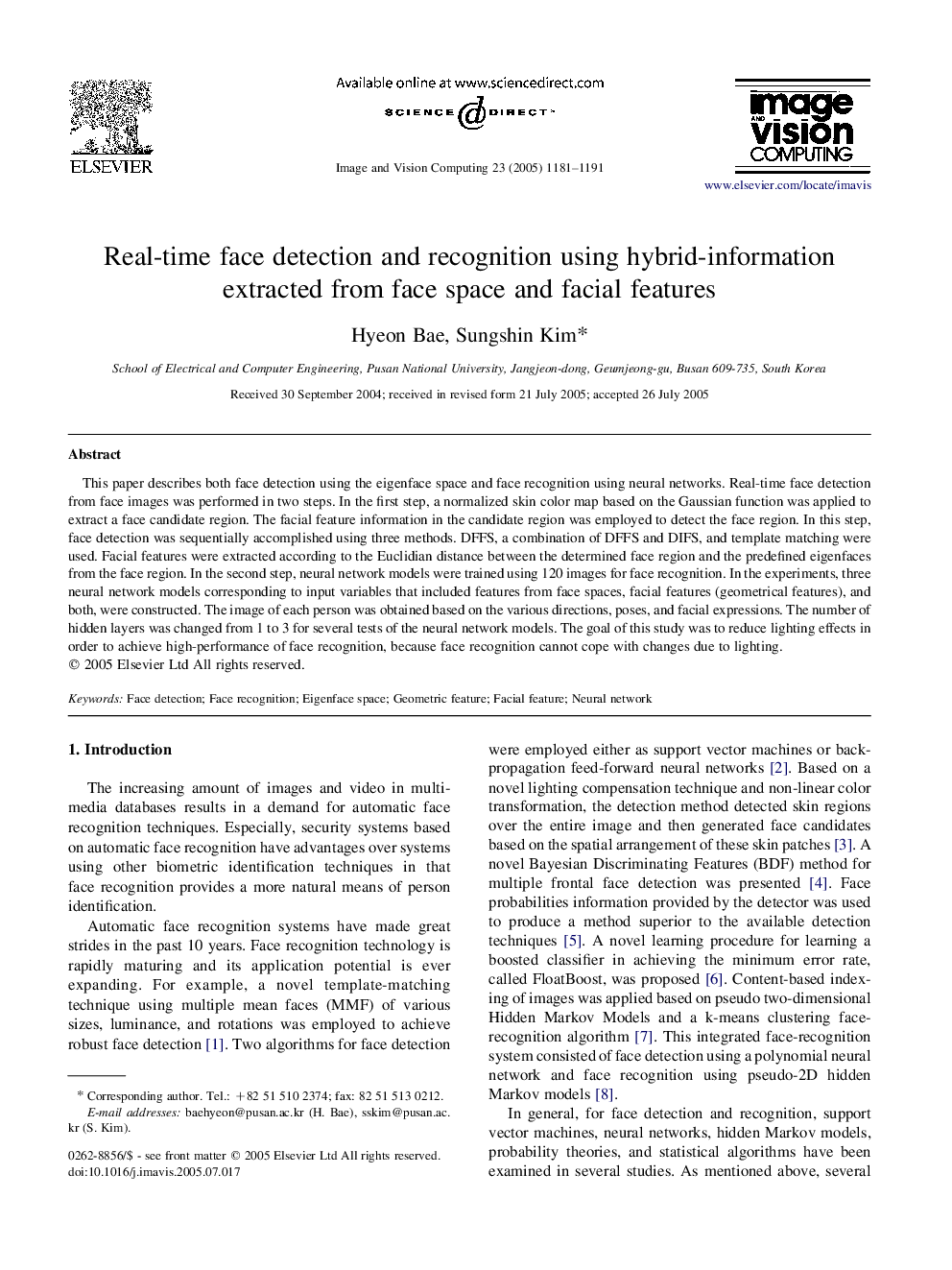| Article ID | Journal | Published Year | Pages | File Type |
|---|---|---|---|---|
| 10359508 | Image and Vision Computing | 2005 | 11 Pages |
Abstract
This paper describes both face detection using the eigenface space and face recognition using neural networks. Real-time face detection from face images was performed in two steps. In the first step, a normalized skin color map based on the Gaussian function was applied to extract a face candidate region. The facial feature information in the candidate region was employed to detect the face region. In this step, face detection was sequentially accomplished using three methods. DFFS, a combination of DFFS and DIFS, and template matching were used. Facial features were extracted according to the Euclidian distance between the determined face region and the predefined eigenfaces from the face region. In the second step, neural network models were trained using 120 images for face recognition. In the experiments, three neural network models corresponding to input variables that included features from face spaces, facial features (geometrical features), and both, were constructed. The image of each person was obtained based on the various directions, poses, and facial expressions. The number of hidden layers was changed from 1 to 3 for several tests of the neural network models. The goal of this study was to reduce lighting effects in order to achieve high-performance of face recognition, because face recognition cannot cope with changes due to lighting.
Related Topics
Physical Sciences and Engineering
Computer Science
Computer Vision and Pattern Recognition
Authors
Hyeon Bae, Sungshin Kim,
